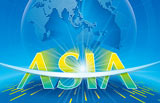Mysteries of the mummified Buddha Zhanggong
Updated: 2015-04-24 07:00
(chinadaily.com.cn)
|
|||||||||||
Incantation and belongings signify Buddha's origin
The seated Buddha wears two sets of clothes. A grey lining could be seen from the wide collar, and on top of it is delicately carved Buddhist garb.
Auspicious clouds and curving lines are knitted on the clothes and on the wide collar there are pictures of flowers. Carved dragons decorated the right sleeves and around the stomach.
"The ornamentations on the clothes show that the statue was renovated during the Ming Dynasty, which corresponds with local records of that time," said Chen Qizhong, curator of the Museum in Dakou, Fujian province.
Patterns on the clothes are auspicious, and "dragons embody longevity and irresistible power," said Bruijn, adding that the words and adornment also reveal a lot of information.
On the left shoulder hangs a black belt, with its two ends on the left chest and back. On the left back of the statue was written with Chinese character "佛"(Buddha).
A philosophy ring also hangs on the left chest and below the ring hang some ladder shaped decorations, which read a variant of "吽", signifying "disasters turning into auspicious" and "delivering all living creatures from torment".
While on exhibition at the Hungarian Natural History Museum, the Buddha was shown holding a flywhisk in his right hand, the symbol of the office of a Ch’an master.
The flywhisk, which stands for compassion in Buddhist symbolism, is not found on a portrait of Zhanggongzushi kept by villagers in Yangchun. But Bruijn believes that it might have "got lost at some point".
"This waving movement received the metaphoric meaning of sweeping away all doubts, worldly thought and desires, therefore symbolizing the ablation of all obstacles one's path to enlightenment," Bruijn said.
Related:
Why return of mummified Buddha matters
Special: Mummy Buddha statue in focus
Related Stories
Record Buddha statue on display in Shanghai 2015-04-23 16:06
Chinese authorities contact Dutch collector of stolen Buddha 2015-04-17 14:39
Why return of mummified Buddha matters 2015-04-16 14:46
Peaceful protest staged in Hungary for return of mummified Buddha 2015-04-13 17:13
World's largest reclining Buddha statue in Jiangxi 2015-04-01 07:00
Today's Top News
China and Russia to start search for Soviet soldiers' remains
Kim likely to visit Russia in May for war victory ceremony
Specialists discuss hot topics in China-EEC relations
Europe gaining importance in China's foreign investment
EU leaders to restore rescue operations after migrant boat disaster
EU, Cuba to hold political dialogue meeting in June
Britain celebrates Queen Elizabeth II 's 89th birthday
Cuban FM visits France over relations
Hot Topics
Lunar probe , China growth forecasts, Emission rules get tougher, China seen through 'colored lens', International board,
Editor's Picks

|

|

|

|

|

|






